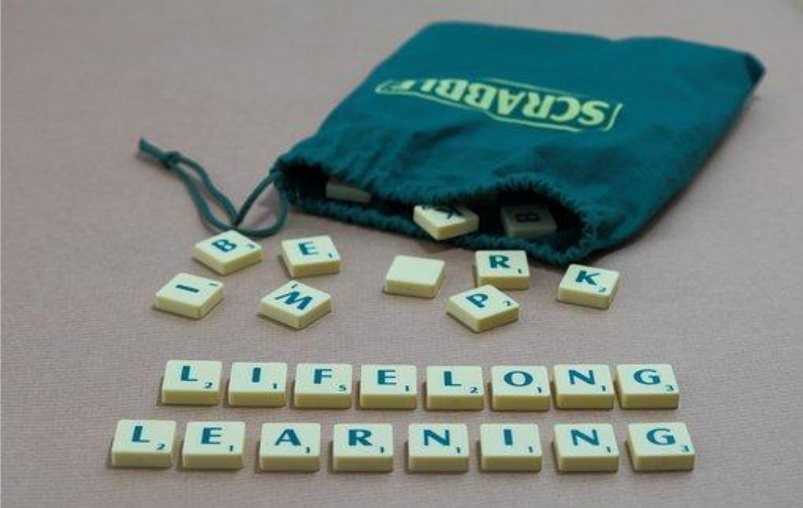National Education Policy (NEP) 2020 aims to bring major reforms in the Higher Education System. Multidisciplinary and flexible learning are the key objectives of restructuring the Education System for improved learning outcomes. In accordance with NEP guidelines, students are free to choose their courses and academic pathways in Higher Education, and to support the students’ choice Academic bank of Credit(ABC) and Multiple Entry Exit system are the fundamental recommendations of University Grant Commission(UGC).
Flexible learning paves the way for lifelong learning and to encourage flexible learning in Higher Education Institutions (HEIs), it is important for the students to choose their academic path leading to the award of certificate, diploma, and degree. There are many circumstances when the learners are required to take a break from their studies, but under present conditions such students are labelled as drop-out students and they get no qualification certificate for the period they were enrolled and studied in HEIs. NEP 2020 offered Multiple Entry Exit System to remove such rigid boundaries of diploma/degree completion years and provided the solution towards reducing the dropout rates with considerable improvement of Gross Enrolment Ratio (GER) to ensure no-loss to students in the case of exiting in between.
Let’s deep dive into the Multiple Entry/Exit System
NEP welcomes the urgent need of reducing the dropout rates and adding flexibility in Higher Education learning with its Multiple Entry Exit System (MEES). MEES allows the students to be their own degree-maker and motivates them to resume learning from the point they were required to leave in between and helps them to achieve their goals in life. According to NEP regulations, undergraduate degree should be either of three or four year duration with multiple entry as well as exit points. Depending on the completion years within this period, one will be able to earn a certificate, diploma or degree. The four year graduation will be a preferred option as it makes the learners experience multidisciplinary and holistic education with the subjects of their own choice. Depending on the degree years of graduation, HEIs have customized options for their Master Degree Programs; A two-year Master’s programme will be offered to those students who have completed three year Bachelor’s programme and a one year programme for those who have done four-year undergraduate degree with research; one more integrated five year Bachelor’s/Master’s programme will also be offered with option to exit at third years of Bachelor’s degree and entry to a Master’s programme. Certificate, Diploma or Degree are organized in levels ranging from Level 5 to Level 10 where:
Level 5 is the Undergraduate Certificate level and is for those students, who exit studies after the first year of graduation;
Level 6 is the Undergraduate diploma level and is for those students, who exit studies after two years of graduation;
Level 7 is the Bachelor’s Degree of three years;
Level 8 is the Bachelor’s Degree (Honours/Research) of four years;
Level 9 is the Master’s Degree One/Two years depending on three/four year’s Bachelor’s Degree respectively.
Level 10 is the Doctoral Degree.
Academic Bank of Credits (ABC)
Academic Bank of Credit (ABC) is a resourceful cornerstone of the Multiple Entry Exit system to promote flexibility in curriculum and institute, ensuring mobility of learners across the HEIs of their choice. There is also an option for students to gain the credits by learning quality Massive Open Online Courses (MOOC) from UGC approved digital platforms such as Study Webs of Active Learning for Young Aspiring Minds (SWAYAM). This national-level credit account will facilitate the digital storage of earned credits from different HEIs and the certificate/diploma/degree will be awarded in line with the accumulated credit in a specific duration at the undergraduate and Master’s levels. HEIs will be required to register in the national ABC framework for the successful implementation of Multiple Entry Exit system and for smooth execution of multidisciplinary and flexible learning with impeccable credit count, credit transfer and credit acceptance from students’ account.
The innovative ABC and MEES projects will serve the following purpose:
Although these policies boost vocational opportunities and enhance practical knowledge leading to national and global progress,the actual execution of such endeavors may bring real-life issues with them.
Some ground level challenges to be faced by HEI in the course of MEES implementation include:
iCloudEMS is a market leader in providing unified solutions to cater the assorted needs of HEIs and upgrade their academic level on par with global standards in the world of Information and Communication technology.
How iCloudEMS simplifies the accomplishment of MEES goals in HEIs
iCloudEMS has always assisted HEIs to function in congruence with the visionary norms of the Education System. We always encourage student-centric education in HEIs and provide a digital-driven ecosystem for quick and flawless execution of the requirements. ABC and MEES are revolutionary measures of NEP 2020 to empower skill-based learning. iCloudEMS offers a collaborative cloud-based environment to align the workflow of HEIs ensuring the actualization of such insightful endeavors.
Our following key attributes furnish all the technological requirements for efficient utilization of academic resources, and to bring holistic development of students:
In a nutshell, it can be stated that, the strategic execution of these groundbreaking MEES and ABC projects will provide seamless mobility to learners ensuring their zero-year loss with multiple qualification award options at different points. Students will be their own Academic account holders and experience a transparent and flexible academic environment. iCloudEMS has always been a trustful digital support system of HEIs through the structured realization of student-centric education with such insightful projects to bring holistic development of the Education System.

No comments:
Post a Comment